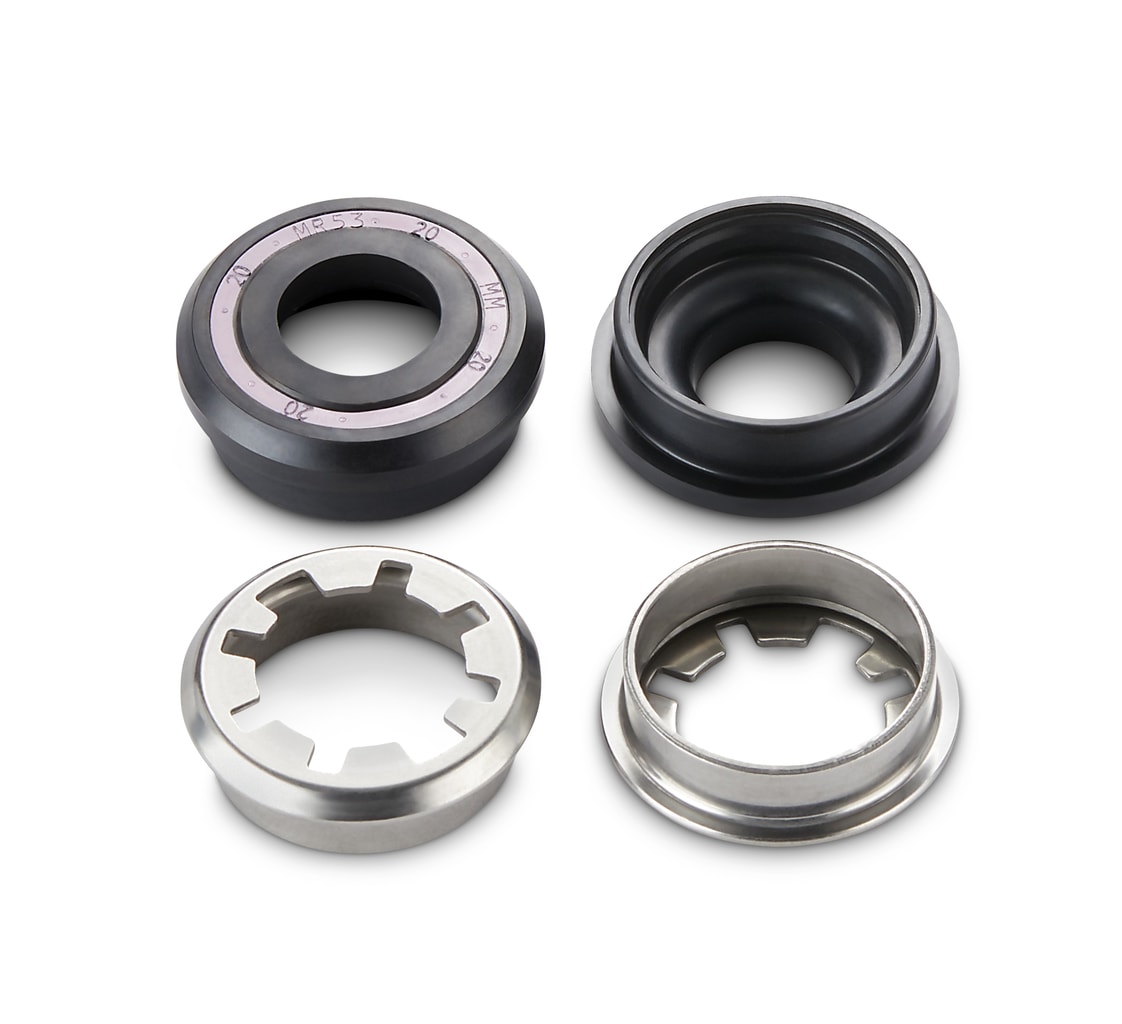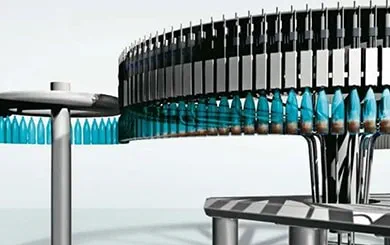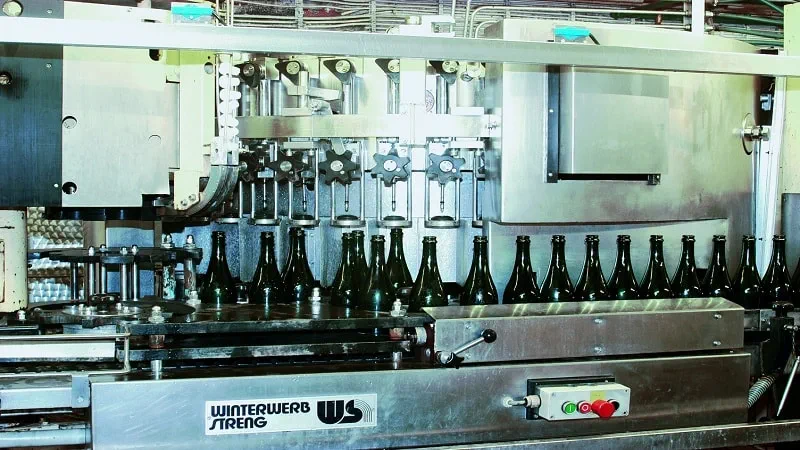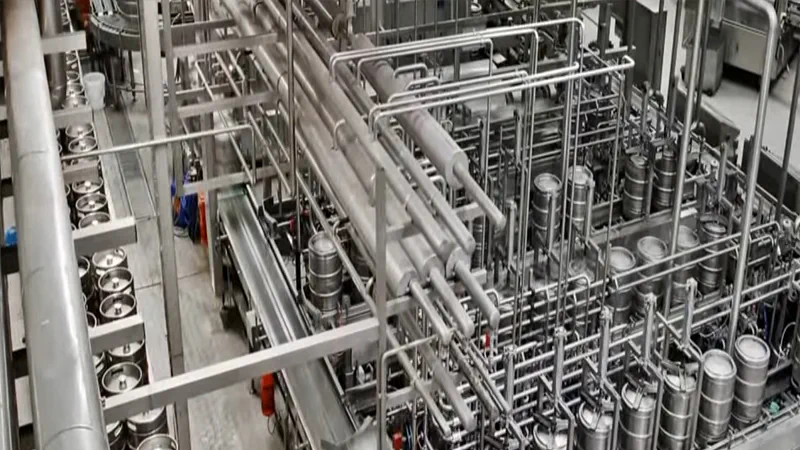
CIP and SIP
Withstanding severe cleaning regimes
Aggressive chemicals shorten seal life
Automated CIP (Cleaning In Place) and SIP (Sterilization In Place) are currently the best methods for cleaning processing systems. They ensure safety and efficiency, prevent toxic contamination of products and minimize recontamination of the process. Their complex formulations of chemicals can rapidly cause severe damage to elastomeric seals, especially in applications with load and pressures. With high temperatures and steam sterilization, which is now commonly up to 150°C / 302°F, this deterioration is intensified.
Cost-effective solutions compliant to standards
Matching the seal material to the system media and the cleaning chemicals can maximize intervals between planned maintenance and production yield. With details of your specific requirements, we can propose cost-effective solutions that are compliant to all major standards and are proven to stand up to almost all known cleaning regimes, however stringent.
Choose from the following material types:
- EPDM based cost-effective sealing materials engineered for aseptic technology
- Excellent performance from a variety of FKM materials
- Isolast® Perfluoroelastomer materials combining the elasticity of an elastomer with almost universal chemical compatibility
- Turcon® PTFE based sealing giving almost total chemical compatibility with unrivalled friction characteristics
Find out more about FoodProTM materials for food contact applications

CIP (Cleaning In Place) facts
CIP cleaning and disinfecting media are essential; their uses include:
- Removing residues and calcium deposits from the product contact surfaces of processing systems
- External cleaning of processing systems
- Disinfecting previously cleaned surfaces of processing systems, their components, and packagings
The main categories of commercially available CIP cleaning and disinfecting media are as follows:
- Alkaline CIP cleaning media, such as those based on sodium hydroxide or potassium hydroxide, with or without added surfactants
- Acidic CIP cleaning media based on mineral or organic acids – with or without added surfactants
- Chlorine-alkaline cleaning media based on sodium hypochlorite
- Acidic CIP disinfecting mixtures with peracetic acid and/or hydrogen peroxide as oxygen donor – in some cases with added surfactants
- Additives to enhance the cleaning effect of CIP media, often containing active oxygen (for example H2O2) to break down organic contaminants more effectively
The following factors are critical in ensuring optimal seal life:
- Cleaning temperature – the temperature of the CIP media has a decisive effect on the chemical activity of the detergents.
- Concentration of the CIP cleaning media – this should be selected in strict observance of the manufacturers’ recommendations.
- Cleaning media exposure time of the sealing material.In turn the necessary exposure time depends strongly on mechanical factors such as the flow rate of the media in the lines, and on the hygienic design of the system components. In particular factors such as the surface quality of the components, the presence of dead spaces, the design of corner radii and the fluidic design of the system have a major impact here.
- Design of the seal
- Correct choice of material

Research Results
Tests prove that matching seal material to an application can extend seal life
Specifying the right seal material when CIP and SIP is used is not a simple matter and standards do not really help. They only offer general information and refer just to groups of elastomeric materials and their compliance with standards. This is why Trelleborg Sealing Solutions has undertaken their own tests to support customers in recommending the optimum sealing material for specific applications.
Material Compatibility tests in CIP and SIP media
Comprehensive studies undertaken by Trelleborg Sealing Solutions have evaluated the performance of materials in a wide range of commercially available and commonly used CIP fluids and solvents. As the CIP process is now usually followed by sterilization in superheated steam up to 150°C / 302°F, tests were also carried out in these conditions.
The most important properties, such as:
- Volume Change
- Weight Change
- Change of Elongation at break
- Change of Tensile Strength
- Hardness Change
Recommendations based on results
As expected, the intensive CIP fluids and high temperatures brought some elastomers tested to their performance limits. Importantly though, results from different materials, even within the same family of basic polymers, were vastly different. This has allowed Trelleborg Sealing Solutions to engineer materials that give maximized performance in CIP and SIP regimes.
Overall conclusions:
- EPDM
Selected EPDM materials displayed excellent results in most CIP fluids and superheated steam. Tests proved that these grades can be used with aggressive polar solvents such as Acetone and Methyl-Ethyl-Ketone (MEK). Due to the unpolar nature of EPDM, they are not recommended for extremely fatty foods and some food grade lubricants. - FKM
The standard FKM material shows good performance in acidic fluids with active oxygen and unpolar solvents, however, its exposure time to steam should be limited. A premium FKM compound can be exposed to steam up to 170°C/338°F and is also more resistant to all types of cleaning fluids. Seals of this material provide longer life than standard FKM seals. Both are high polar compounds and can be used in fatty foods, cosmetics, oils and lubricants. - Isolast®
Isolast® FFKM gave the best performance in all test situations. In addition, it has been proved in steam at temperatures up to 240°C/464°F. This means that Isolast® should be selected for the most critical applications where line stops cannot be tolerated. - Turcon®
Turcon® PTFE based sealing materials have almost universal chemical compatibility and are capable of operating at high temperatures and in steam. This makes them ideal for use in CIP and SIP regimes. The Turcon® MF range of materials has been specially developed for aseptic applications, with compliance to most major standards.
Find out more about FoodPro® materials
Choosing the right material to extend life
Although standard immersion tests provide detailed information about the suitability of materials in certain fluids, they are not very helpful in predicting length of life of sealing materials. This is why Trelleborg Sealing Solutions has extended our testing over a wider range of temperatures, high concentrations of chemicals and longer immersion times.
In the first test, a variety of FKM materials were tested at two different temperatures. At the lower one, all compounds showed good results. However, it was not until the test was repeated at a higher temperature that the differences between the material characteristics became clear. In the second test, the concentration of CIP medias was changed from 1% to 2%. Again, the differences only became apparent in the more demanding conditions.
By undertaking these more extensive tests, Trelleborg Sealing Solutions can recommend seals that:
- Provide extended life
- Minimize maintenance cost
- Reduce life time cycle costs
